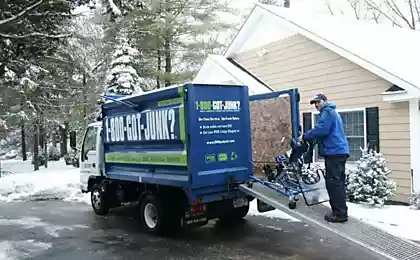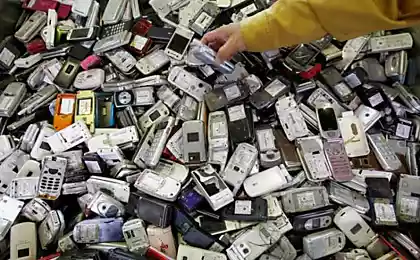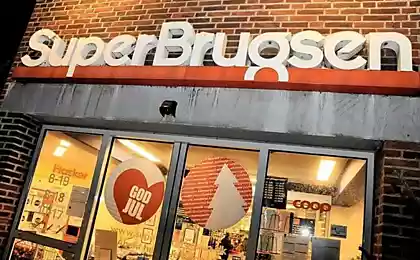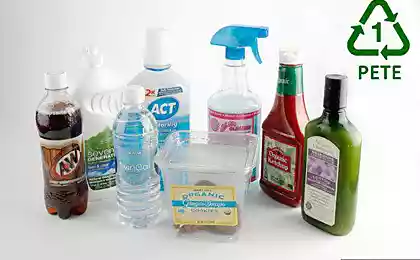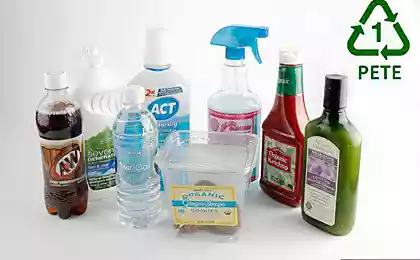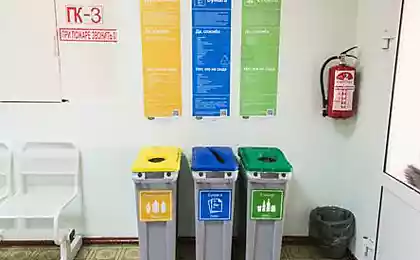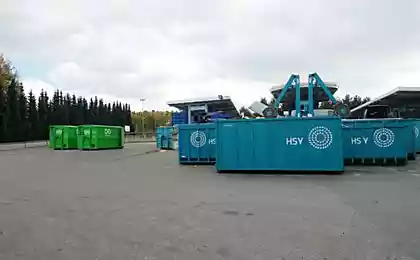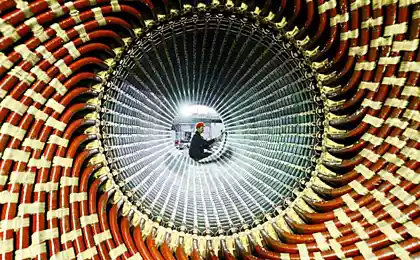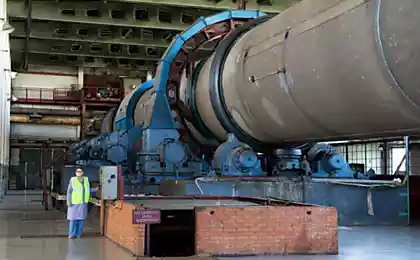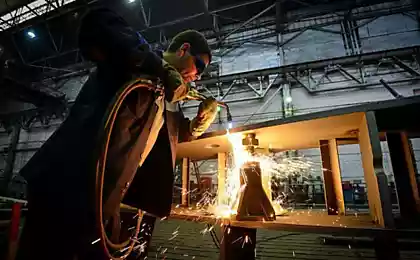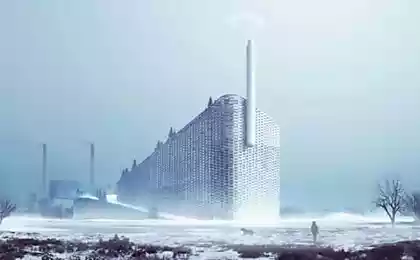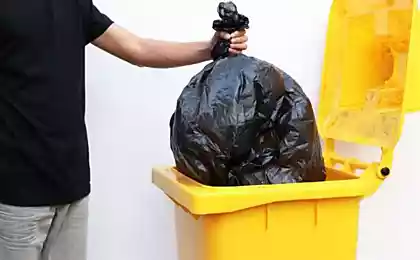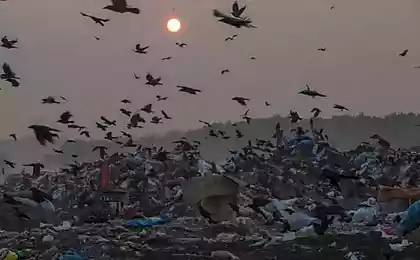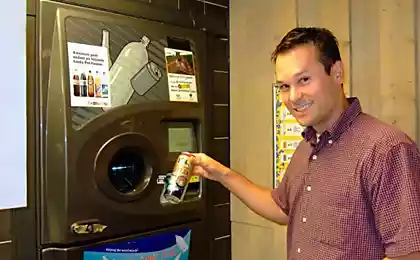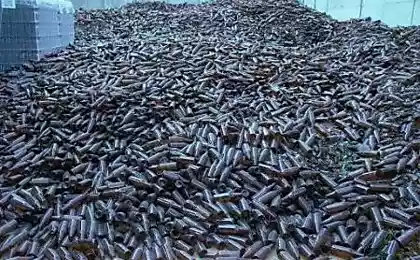304
How is a waste processing plant in the Swedish city of Helsingborg
In the Swedish city of Helsingborg, a local crematorium provides heat to 60,000 homes.
This saves 10% of the energy of the local energy company
Photograph: YAKIMCHUK ANDRE, 2015
Manual selection of dangerous garbage, extracting useful things from it and combating dangerous poisonous fumes. All of this is the hard work of a small recycling plant that makes the planet a little cleaner.
At the entrance, the usual urban stream of garbage - a mix of scraps, plastic bottles and cans, glass, bags, a variety of dirt and boards. On the way out – these are such neat blocks of plastic, metal, paper and polyethylene, which will soon go back into business and thus help reduce harm to nature.
Let me tell you why it is important to do this. And what danger is a landfill within a radius of 20-30 kilometers from the house?
In an ordinary landfill, garbage is piled up in one big pile:
As you can see, it just looks disgusting. And it's not just aesthetics, landfills cause a lot of problems:
First, all this waste flows slowly and enters the subsurface waters. The so-called “filtrate” (the most juices of a landfill with heavy metals impurities) can be extremely dangerous for the ecology of the region. Especially if it leaks into the aquifer.
When we were just building our first waste processing plant, water treatment according to Rybnadzor standards (to the state of “safe for natural water bodies”) was perhaps the most expensive part of the project. It cost more than a dozen million rubles per object, but from the point of view of ecology it is the first and most important investment.
Secondly, garbage in landfills emits abundant methane. Therefore, as soon as the snow comes down, it all starts to burn and often explodes. As a result, there is a huge cloud of toxic smoke in the air (in which there are a lot of extremely dangerous things for health), which, if bad luck with the wind, covers your city and street. There is no way to protect yourself from this. You can only remove old landfills, reclaim them and move to storage at landfills. Like this:
This is our waste storage site. On it, layer by layer, garbage is laid, from which plastic, metal, paper and polyethylene have already been removed (as much as possible). Garbage is packed with cubes, which are compressed 7-10 times in comparison with the traditional “Russian folk” piling in a pile.
As a result, one such landfill replaces about nine landfills of similar area.
And what you see here is the last layer of the polygon -- these are the same cubes that are already sprinkled on top by an organic fraction, something like land with organic debris and sand. In 20 to 25 years there will be a green hill. But first, a few more layers of cubes will lie on top. Such stacking is both compaction, as in a warehouse, and protection from fire. The landfills don't burn - there's just nothing to burn - and almost no methane is emitted.
The next important part is that you don't have to throw everything at the landfill. Everything useful should be extracted from the garbage if possible.
In fact, garbage is a useful resource that creates a city. And it can be used effectively. Extract from it, if not gold, then metal (expensive scrap metal), plastic and other fractions, which can then be restarted into the production cycle. Note that this not only unloads the landfill, but also reduces the scale of production of new materials - and for this the planet also says thank you.
Here's the sorting.
Above this hall on top there is a tape, where the metal is selected by a special magnet, and paper, polyethylene, plastic and packaging from household chemicals are extracted manually:
Paper, polyethylene, plastic and packaging from household chemicals
manually
This is a magnet for cans and other metal parts.
Here, from above, the garbage shakes in a rumble and passes through a special sieve (this is greatly simplified – in fact, the process is much more complicated) to then get into the Kamaz from below in the form of “earth”. In Europe, organics are actively used, in particular, sent to Africa in order to stop the onslaught of the desert. Unfortunately, we don’t have a lot of glass and, worse, batteries.
Here's how much glass is usually in the trash:
Batteries are very harmful to the environment, but unlike Europe, we do not have separate waste collection. As a result, it is not possible to completely remove batteries from garbage - "finger", "little finger" and sentry are very small, easily pass through the grille of the roar. And so our organics can be used, by and large, only for landfill reclamation. Aid to Africa should be forgotten for now.
So the first thing to start with is to discard dangerous batteries with acid and metal separately. It is written on them, but you know very well that one inscription is not enough. We tried to open the points, but, unfortunately, their effectiveness is very low. So for now, we're going to catch all this in organics.
This is how organically sprinkled "cubes" of pressed garbage at the landfill. This picture doesn't look very neat, but it pleases the heart of any ecologist - because he knows what would have happened if this garbage was scattered in a landfill. I remind you that landfills are burning, filtrate enters subsoil water, there are an incredible number of birds and other scavengers in landfills, like dogs, and landfills occupy huge territories and require constant further expansion for new and new garbage. And the cubes stand there and don't bother anyone. As you gain about 15-20 layers - after recultivation, you get a hill with green grass.
And finally, waste paper, so pleasing to the hearts of those born in the USSR. Naturally, it does not get to the landfill, but immediately goes into processing. Like so much else.
Like this.
Most importantly, in Russia, a conventional waste processing plant is able to remove up to 5% of raw materials from the stream, and send the remaining 95% for storage in pressed form. We have learned how to use 8% of garbage (sometimes up to 10%), which is almost twice the industry average. It was very expensive in terms of both engineering and development — but it’s worth it. At least when my son asks me what I'm doing, I'm not ashamed to tell him.
Source: www.livejournal.com/magazine/943866.html
This saves 10% of the energy of the local energy company
Photograph: YAKIMCHUK ANDRE, 2015
Manual selection of dangerous garbage, extracting useful things from it and combating dangerous poisonous fumes. All of this is the hard work of a small recycling plant that makes the planet a little cleaner.
At the entrance, the usual urban stream of garbage - a mix of scraps, plastic bottles and cans, glass, bags, a variety of dirt and boards. On the way out – these are such neat blocks of plastic, metal, paper and polyethylene, which will soon go back into business and thus help reduce harm to nature.
Let me tell you why it is important to do this. And what danger is a landfill within a radius of 20-30 kilometers from the house?
In an ordinary landfill, garbage is piled up in one big pile:
As you can see, it just looks disgusting. And it's not just aesthetics, landfills cause a lot of problems:
First, all this waste flows slowly and enters the subsurface waters. The so-called “filtrate” (the most juices of a landfill with heavy metals impurities) can be extremely dangerous for the ecology of the region. Especially if it leaks into the aquifer.
When we were just building our first waste processing plant, water treatment according to Rybnadzor standards (to the state of “safe for natural water bodies”) was perhaps the most expensive part of the project. It cost more than a dozen million rubles per object, but from the point of view of ecology it is the first and most important investment.
Secondly, garbage in landfills emits abundant methane. Therefore, as soon as the snow comes down, it all starts to burn and often explodes. As a result, there is a huge cloud of toxic smoke in the air (in which there are a lot of extremely dangerous things for health), which, if bad luck with the wind, covers your city and street. There is no way to protect yourself from this. You can only remove old landfills, reclaim them and move to storage at landfills. Like this:
This is our waste storage site. On it, layer by layer, garbage is laid, from which plastic, metal, paper and polyethylene have already been removed (as much as possible). Garbage is packed with cubes, which are compressed 7-10 times in comparison with the traditional “Russian folk” piling in a pile.
As a result, one such landfill replaces about nine landfills of similar area.
And what you see here is the last layer of the polygon -- these are the same cubes that are already sprinkled on top by an organic fraction, something like land with organic debris and sand. In 20 to 25 years there will be a green hill. But first, a few more layers of cubes will lie on top. Such stacking is both compaction, as in a warehouse, and protection from fire. The landfills don't burn - there's just nothing to burn - and almost no methane is emitted.
The next important part is that you don't have to throw everything at the landfill. Everything useful should be extracted from the garbage if possible.
In fact, garbage is a useful resource that creates a city. And it can be used effectively. Extract from it, if not gold, then metal (expensive scrap metal), plastic and other fractions, which can then be restarted into the production cycle. Note that this not only unloads the landfill, but also reduces the scale of production of new materials - and for this the planet also says thank you.
Here's the sorting.
Above this hall on top there is a tape, where the metal is selected by a special magnet, and paper, polyethylene, plastic and packaging from household chemicals are extracted manually:
Paper, polyethylene, plastic and packaging from household chemicals
manually
This is a magnet for cans and other metal parts.
Here, from above, the garbage shakes in a rumble and passes through a special sieve (this is greatly simplified – in fact, the process is much more complicated) to then get into the Kamaz from below in the form of “earth”. In Europe, organics are actively used, in particular, sent to Africa in order to stop the onslaught of the desert. Unfortunately, we don’t have a lot of glass and, worse, batteries.
Here's how much glass is usually in the trash:
Batteries are very harmful to the environment, but unlike Europe, we do not have separate waste collection. As a result, it is not possible to completely remove batteries from garbage - "finger", "little finger" and sentry are very small, easily pass through the grille of the roar. And so our organics can be used, by and large, only for landfill reclamation. Aid to Africa should be forgotten for now.
So the first thing to start with is to discard dangerous batteries with acid and metal separately. It is written on them, but you know very well that one inscription is not enough. We tried to open the points, but, unfortunately, their effectiveness is very low. So for now, we're going to catch all this in organics.
This is how organically sprinkled "cubes" of pressed garbage at the landfill. This picture doesn't look very neat, but it pleases the heart of any ecologist - because he knows what would have happened if this garbage was scattered in a landfill. I remind you that landfills are burning, filtrate enters subsoil water, there are an incredible number of birds and other scavengers in landfills, like dogs, and landfills occupy huge territories and require constant further expansion for new and new garbage. And the cubes stand there and don't bother anyone. As you gain about 15-20 layers - after recultivation, you get a hill with green grass.
And finally, waste paper, so pleasing to the hearts of those born in the USSR. Naturally, it does not get to the landfill, but immediately goes into processing. Like so much else.
Like this.
Most importantly, in Russia, a conventional waste processing plant is able to remove up to 5% of raw materials from the stream, and send the remaining 95% for storage in pressed form. We have learned how to use 8% of garbage (sometimes up to 10%), which is almost twice the industry average. It was very expensive in terms of both engineering and development — but it’s worth it. At least when my son asks me what I'm doing, I'm not ashamed to tell him.
Source: www.livejournal.com/magazine/943866.html
10 books about the struggle of man against the system, which is worth reading
Resentment from the standpoint of objective psychology
